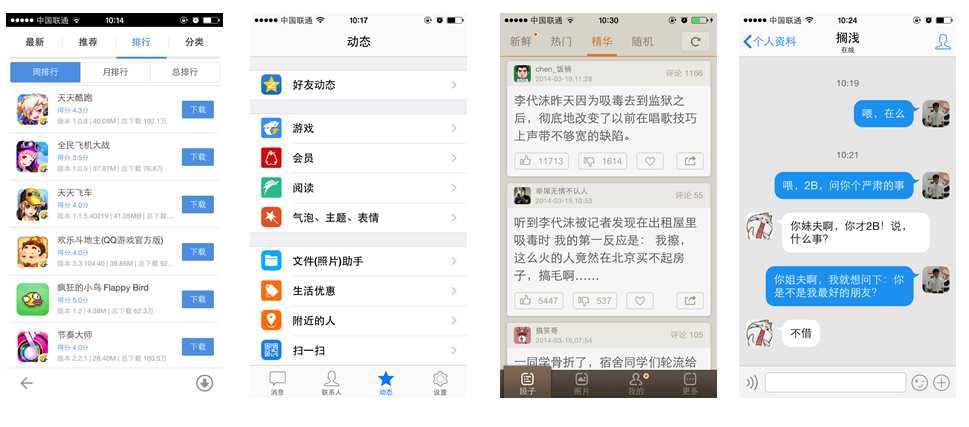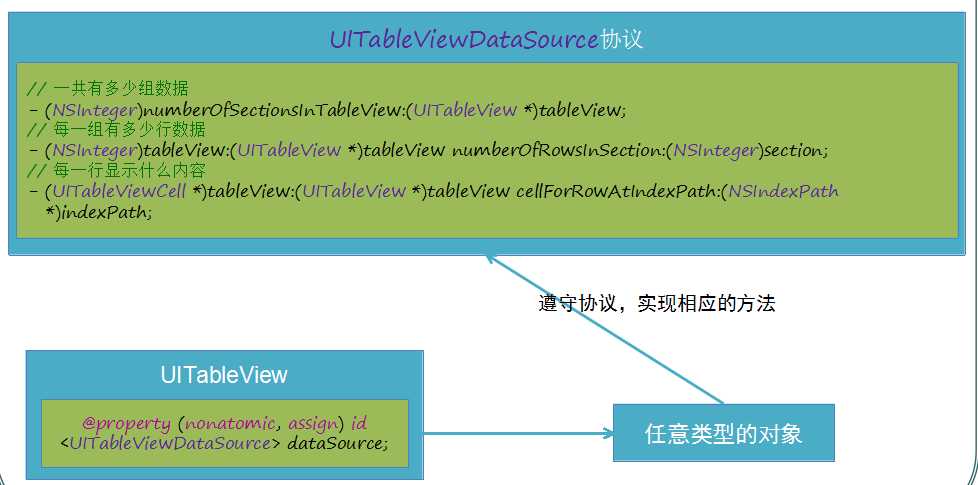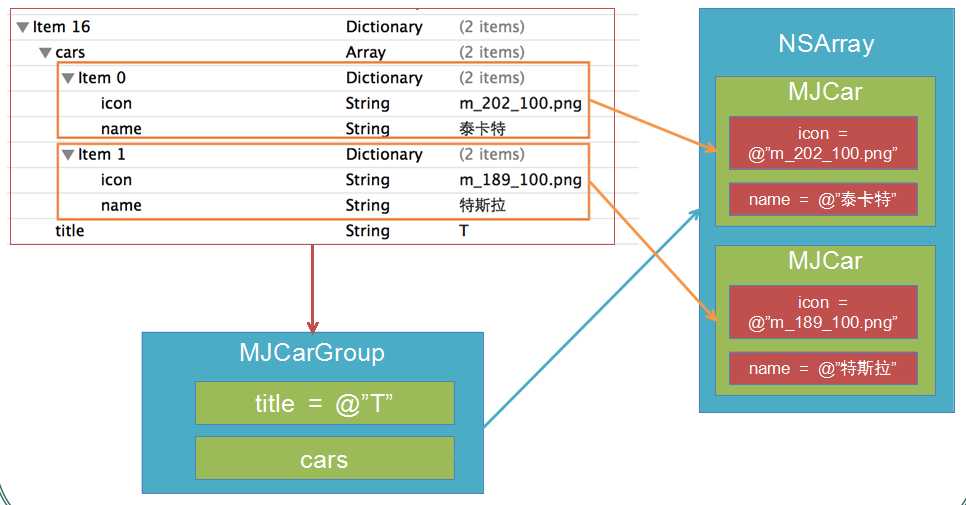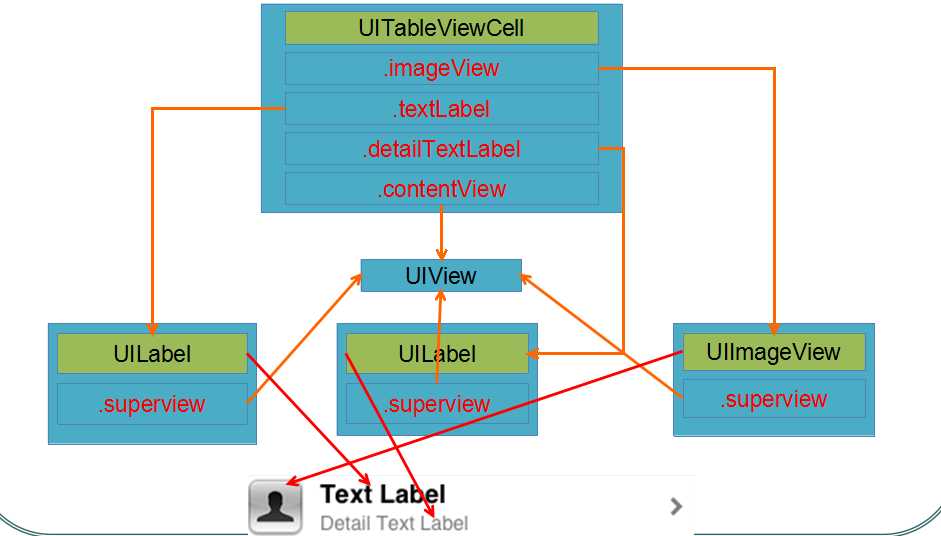标签:

在iOS中,要实现表格数据展示,最常用的做法就是使用UITableView
UITableView继承自UIScrollView,因此支持垂直滚动,而且性能极佳


- (NSInteger)numberOfSectionsInTableView:(UITableView *)tableView;
- (NSInteger)tableView:(UITableView *)tableView numberOfRowsInSection:(NSInteger)section;
- (UITableViewCell *)tableView:(UITableView *)tableView cellForRowAtIndexPath:(NSIndexPath *)indexPath;

UITableViewCellAccessoryDisclosureIndicator
UITableViewCellAccessoryDetailDisclosureButton
UITableViewCellAccessoryCheckmark
UITableViewCellStyleDefault




UITableViewCell对象的话,那将会耗尽iOS设备的内存。要解决该问题,需要重用
UITableViewCell对象
外的UITableViewCell放入一个对象池中,等待重用。当UITableView要求dataSource
返回UITableViewCell时,dataSource会先查看这个对象池,如果池中有未使用的
UITableViewCell,dataSource会用新的数据配置这个UITableViewCell,然后返回
给UITableView,重新显示到窗口中,从而避免创建新对象
而且每一行用的不一定是同一种UITableViewCell,所以一个UITableView可能拥有不同类型的UITableViewCell,
对象池中也会有很多不同类型的UITableViewCell,那么UITableView在重用UITableViewCell时可能会得到错误类型的UITableViewCell
一个特定的字符串标识来设置reuseIdentifier(一般用UITableViewCell的类名)。当UITableView要求dataSource
返回UITableViewCell时,先通过一个字符串标识到对象池中查找对应类型的UITableViewCell对象,如果有,就重用,
如果没有,就传入这个字符串标识来初始化一个UITableViewCell对象
- (UITableViewCell *)tableView:(UITableView *)tableView cellForRowAtIndexPath:(NSIndexPath *)indexPath
{
// 1.定义一个cell的标识
static NSString *ID = @"mjcell";
// 2.从缓存池中取出cell
UITableViewCell *cell = [tableView dequeueReusableCellWithIdentifier:ID];
// 3.如果缓存池中没有cell
if (cell == nil)
{
cell = [[UITableViewCell alloc] initWithStyle:UITableViewCellStyleSubtitle reuseIdentifier:ID];
}
// 4.设置cell的属性...
return cell;
}
标签:
原文地址:http://www.cnblogs.com/YangFuShun/p/4331916.html